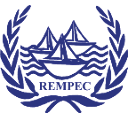Spain

Legal Framework
At a national level a procedure was established in 2011 by the Environmental Public Prosecutor to determine whether the enforcement process concerning a ship-source oil pollution should follow the criminal justice or the administrative system. A general criterion was defined considering the sea polluted (Mediterranean or Atlantic), the distance to coast and the area detected, taking into account the particular circumstances of each case:
- In the Mediterranean Sea, polluted areas over 2 km2 within 12 miles from coast and polluted areas over 3 km2 beyond 12 miles from coast may follow the criminal justice system.
- In the Atlantic Ocean, polluted areas over 5 km2 within 12 miles from coast and polluted areas over 10 km2 beyond 12 miles from coast may follow the criminal justice system.
1. Ship-source pollution crimes following the criminal justice system
- These crimes are classified as offences against natural resources or the environment and covered in the Organic Law 10/1995, of November 23, Chapter III, articles 325-331 of the Spanish Criminal Code.
2. Ship-source pollution offences following the administrative system
- MARPOL offences as well as their administrative procedures are covered in the Consolidated Text of the Spanish Law for State Ports and the Merchant Marine, approved by Royal Decree 2/2011 of September 5, Title IV, sanctioning procedure, Third Book, Merchant Marine, articles 305-320.
- This Law establishes the following penalties:
- Up to 60,000 € for minor offences.
- Up to 601,000 € for serious offences, for instance neglect discharges.
- Up to 3,005,000 € for very serious offences, for instance intentional discharges.
- Additional penalties can be imposed concerning the necessary measures to return things to its original state and to claim for damage compensation.
- Nevertheless the common rules of administrative sanctioning processes are covered in Law 30/1992 on the Legal Regime of Public Administrations and Common Administrative of November 26, Title IX. This Law has been amended by Law 39/2015 of October 1 and will entry in force in October 2 of 2016.
- The regulatory standards in the administrative system are the following:
- Concerning the procedures:
- Standard Procedures related to the power to impose a penalty approved by Royal Decree 1398/1993 of August 4, amended by Law 39/2015 October 1.
- Sanction Procedure for offences in marine in civil navy approved by Royal Decree 1772/1994 of August 5.
- Concerning vessel’s inspections in case a national o foreign vessel is the source of a pollution:
- Procedure for inspection and certification of civil vessels approved by Royal Decree 1837/2000 November 10.
- Procedure for inspection of foreign vessels in Spanish ports approved by Royal Decree 1737/2010 December 23.
- Concerning oil and noxious liquid substances pollutions:
- Royal Decree 394/2007 of March 31 on ship-source pollution in Spanish Waters, which implements the Directive 2005/35/EC of the European Parliament and of the Council of 7 September 2005 on ship-source pollution and on the introduction of penalties, particularly criminal penalties, for infringements, modified by the Directive 2009/123/EC of the European Parliament and of the Council of October 21.
- Concerning the procedures:
Operational Structure
Stakeholders involved
Coordination is essential between stakeholders in order to detect the pollution and the polluter, to collect the evidences and to prove the offence. The authorities/stakeholders involved are the following:
- Environmental Public Prosecutor. It belongs to the Ministry of Justice.
www.fiscal.es/fiscal/publico/ciudadano/fiscal_especialista/medio_ambiente - The General Directorate of the Merchant Marine is the Maritime Authority in Spain. It belongs to the Ministry of Development under the General Secretariat for Transport.
www.fomento.gob.es/MFOM/LANG_CASTELLANO/DIRECCIONES_GENERALES/MARINA_MERCANTE - The Spanish Maritime Safety Agency is the operational branch of the Maritime Authority.
www.salvamentomaritimo.es
Stakeholders’ roles
- The Spanish Maritime Safety Agency:
- Performs the surveillance operations.
- Collects and documents the evidences.
- The General Directorate of the Merchant Marine:
- Performs the vessel inspections if the polluter calls in a Spanish port (Harbour Master’s Office).
- Notifies the pollution incident.
- Conducts the administrative proceedings.
- May reroute the vessel to a Spanish port
- The Public Prosecutor:
- Conducts the criminal proceedings.
Surveillance Operations
The Spanish Maritime Safety Agency (SASEMAR) controls the aerial surveillance missions. SASEMAR owns 3 aircrafts CASA CN235-300 fully equipped, one of which patrols the Mediterranean Sea, and the other two the Atlantic Ocean, covering the Spanish North Coast and the Canary Islands respectively.
Approximately 1.200 hours of SASEMAR’s aircrafts are dedicated to pollution surveillance, and around 50% is performed by night.
The aircrafts are fitted with specific antipollution sensors: SLAR, IR/UV, MWR, LFS, and with other equipment: FLIR/CALI, video recorder, digital photo camera, AIS and data link, managed by two operators placed in two mission consoles. The operators evaluate the data from the sensors. The information is finally analyzed in the Mission Support Centre and a technical report is written.
The aircraft based in Valencia patrols the Spanish Mediterranean Coast.
The helicopters can support the marine pollution aerial surveillance, even taking samples from the sea. The Spanish Maritime Safety Agency operates eleven helicopters bases with nine medium size helicopters and two heavy helicopters equipped with FLIR, video recorder and digital photo camera. Four of the helicopter bases cover the Mediterranean Coast and one covers the Strait of Gibraltar.
SASEMAR plans the surveillance areas in the Mediterranean Sea, taking into account the major shipping routes in the area, the Tarifa Traffic Separation Scheme, the satellite images coverage and pollution information reported.
Annual Reports
Annually the Spanish Maritime Safety Agency publishes a report that covers information of the aerial surveillance operations, including figures of the spills detected and the polluting vessels caught red-handed. This information is analysed through indicators that consider the flight hours and the traffic .

